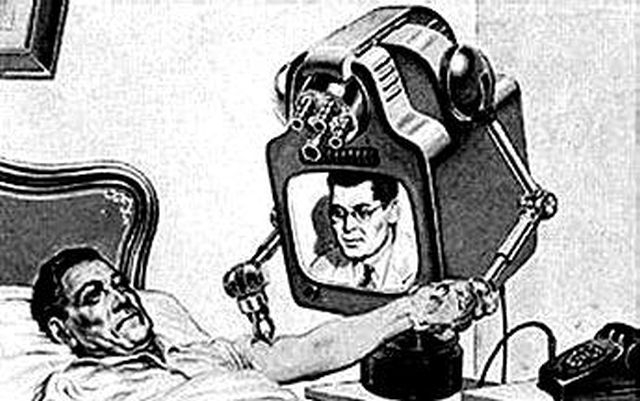Teledoctors: Economical and Available Health Care Solutions
Discovering the Perks and Challenges of Teledoctors in Modern Healthcare
As the medical care landscape evolves, teledoctors have arised as a pivotal part in bridging spaces in medical gain access to and effectiveness. While they supply the assurance of reaching remote areas and lowering functional costs, the journey is not without its obstacles. Personal privacy worries, the digital divide, and cybersecurity hazards present considerable challenges that have to be addressed to harness their full capacity. How can the medical care sector equilibrium these benefits with the inherent challenges? This dilemma welcomes a deeper exploration into the transformative role of teledoctors in shaping the future of medical care delivery.
Expanding Accessibility to Treatment
Telemedicine has arised as a crucial technology in contemporary medical care, substantially expanding accessibility to care for varied populaces. By leveraging digital technology, teledoctors have actually transformed the traditional medical care distribution design, making it possible for patients in underserved or remote areas to get timely clinical assessment. This evolution is particularly beneficial for people staying in rural communities, where the deficiency of medical care centers and experts usually brings about postponed or insufficient treatment.
Teledoctors are important in connecting the void produced by geographical obstacles. Through virtual examinations, patients can access a large range of healthcare solutions without the demand for comprehensive traveling. This is particularly useful for those with flexibility issues or chronic problems needing frequent clinical interest. Additionally, telemedicine improves continuity of treatment by allowing regular follow-ups and surveillance, consequently boosting individual end results.
The integration of teledoctors right into health care systems also sustains the monitoring of public health and wellness situations by facilitating fast feedback and triage. Throughout pandemics, as an example, digital consultations minimize the burden on physical medical care facilities, decreasing exposure threats for both patients and doctor. As telemedicine proceeds to progress, it assures to reshape the landscape of medical care availability, making it a lot more comprehensive and efficient.
Cost-Effectiveness of Teledoctors
The cost-effectiveness of teledoctors is a significant aspect driving their extensive fostering in health care systems. By lowering the demand for physical framework and in-person check outs, teledoctors provide an even more budget friendly choice to typical medical care delivery. This version permits healthcare suppliers to lower operational costs, such as those associated with keeping physical offices and employing extensive on-site personnel. teledoctors. Subsequently, these savings can be passed on to individuals in the type of lowered examination charges, making health care a lot more easily accessible to a broader population.
Moreover, teledoctors assist in an extra effective usage of healthcare sources by decreasing unnecessary emergency clinic visits and health center admissions. Individuals can access timely consultations for small disorders or follow-up treatment, which helps to reduce the problem on overstretched medical care centers. This efficiency not only leads to cost financial savings for doctor however also lowers the economic stress on people that may or else deal with expensive healthcare facility expenses.
In addition, teledoctors can assist in taking care of persistent conditions much more successfully by giving consistent monitoring and timely treatments. This aggressive method can avoid problems, thus minimizing long-lasting treatment costs. In general, teledoctors provide a practical solution to the intensifying prices of medical click over here care, while keeping quality treatment shipment.
Enhancing Client Benefit
While cost-effectiveness plays a critical function in the increase of teledoctors, boosting client benefit stands as one more compelling advantage of this healthcare model. With the integration of teledoctors, patients can bypass the commonly time-consuming procedure of scheduling and participating in in-person appointments. This version eliminates the demand for traveling, decreasing time spent en route and waiting areas, thereby offering substantial time savings for patients. Specifically for those with mobility problems or staying in remote areas, teledoctors offer a vital web link to healthcare that may or else be unattainable.
In addition, teledoctors use adaptable scheduling, enabling patients to prepare examinations at times that best fit their individual and professional commitments. This flexibility is invaluable for people stabilizing demanding job timetables or household obligations, ensuring that health care can be integrated effortlessly into their lives. Additionally, the capacity to accessibility clinical professionals from the convenience of one's home can result in raised patient involvement and adherence to treatment strategies, as the obstacles to seeking care are minimized.
The benefit given by teledoctors not just boosts the patient experience however additionally adds to a more reliable and receptive healthcare distribution system, ultimately supporting far better wellness outcomes.
Dealing With Privacy Worries
In the middle of the expanding fostering of teledoctors, personal privacy worries become a considerable factor to consider. As health care significantly depends on digital platforms, guaranteeing the privacy visit this page of client info comes to be vital. The digitization of medical records and making use of telecommunication modern technologies necessitate robust security steps to safeguard sensitive information from unauthorized accessibility and breaches.
Health care service providers need to adhere to rigorous policies, such as the Medical Insurance Transportability and Liability Act (HIPAA) in the USA, which establishes nationwide requirements for protecting clinical info. Compliance with such laws is important in maintaining individual trust fund and guaranteeing their data is taken care of properly. Encryption of information, safe and secure communication networks, and routine audits are several of the steps that can be executed to improve information protection.
Cybersecurity threats are evolving, and health care organizations should remain watchful to brand-new vulnerabilities. Additionally, educating both people and healthcare carriers regarding finest practices in data privacy is essential.
As teledoctors come to be much more indispensable to medical care distribution, dealing with personal privacy problems is necessary to guarantee both the effectiveness and credibility of these solutions.

Navigating the Digital Separate
Bridging the digital divide is a vital difficulty in the extensive adoption of teledoctors. The benefits of teledoctors-- such as raised availability and convenience-- stay inaccessible for numerous people who could most benefit from them.
In addition, efforts to support innovation for low-income households can play an essential role in making sure equitable gain access to. Healthcare carriers and community companies should work together to offer digital proficiency programs, empowering individuals to browse telehealth platforms confidently.

Final Thought
The assimilation of teledoctors into modern-day healthcare supplies significant advantages, including boosted access to care, cost-effectiveness, and improved person benefit. Nonetheless, challenges such as personal privacy concerns, the digital divide, find more information and cybersecurity hazards should be resolved to make the most of these benefits. By implementing robust information defense steps, enhancing electronic literacy, and guaranteeing safe and secure technical infrastructure, the potential of teledoctors can be completely recognized, advertising equitable healthcare delivery and changing the healthcare experience for all people.
